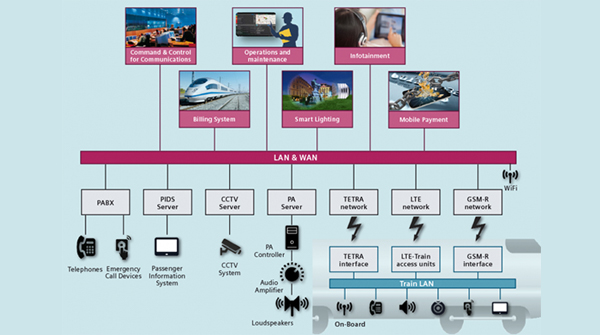This week’s curiosity box explores neuroscience and passenger announcement systems through the following topics.
1 – How does smell unlock memories?
2 – Are symmetrical faces more attractive?
3 – How does a train announcement system work?
1 – How does smell unlock memories?
On Tuesday, I had a surreal experience in the toilet at my workplace. Before I sat down at my desk, I decided to freshen up a little. As soon as I opened the toilet’s door, I felt like I had to get ready for my gym workout. As strange as it might sound, the toilets at my workplace and at my old gym has the same smell.
I was amazed at how, because of smell, I was able to recollect and resurface memories I almost forgot. In scientific terms, this is called odour evoked autobiographical memory.
But how does it work?
The short and simple answer is that the brain region that processes smell, memories, and emotions are highly intertwined. Scents, which are nothing but chemical particles, are taken to the olfactory receptors through our nostrils when we inhale. As soon as the particles hit the receptors, the brain begins to process this sensation into something it can read.
The next step that occurs is what makes the smell sensory system unique. Typically, other sensory signals go to the thalamus first before being redirected to the respective parts in the brain. In the case of smell, the signals from the olfactory receptors go straight to the amygdala and the hippocampus which are responsible for emotions and memory respectively.
The answer to why the olfactory sensory, memory, and emotion centres are closely intertwined lies with evolution. In our antedated brains, the amygdala evolved in a part of the brain that was meant for sensing chemicals. Over the years, these two regions did not grow far apart. They remained interconnected, giving smell the unique power to unlock memories over the other senses.
Because of this unique arrangement, memories and smells can be closely associated with each other right at the start. Therefore when we smell something, the memory that was associated with it springs to life instantly.
2 – Why does symmetry matter?
Symmetry, by definition, is “a transformation that leaves an object unchanged.”. The word symmetry is typically associated with simple geometric shapes like squares and triangles, which underpin complex mathematical models scientists develop. Symmetry plays a vital role not only in mathematics but also in the natural world. It has helped us unlock how species survived evolution and also gave an initial rationale behind the tree of life. In the natural worlds, symmetry is looked as a desirable trait. Be it butterflies, birds, or animals, symmetrically shaped bodies are a sign of fertility, health, and beauty.
In the case of humans, we are no different.
Research has proven that there is a direct correlation between symmetry and perceived beauty. In humans, FMRI studies have proven why we tend to align more with symmetrical faces. When we see something, our fusiform gyrus gets activated. The fusiform gyrus is a part of the brain that plays a vital role in object and face recognition. Interestingly, when we see a symmetrical face, along with the fusiform gyrus, the reward and pleasure centres of our brain also get activated.
The brain automatically links vision and pleasure when we see symmetrical faces and thereby associating with symmetry with beauty. And it is not just with beauty. Interestingly, research has shown that facial symmetry can be linked with the big 5 personality traits in us: Openness to experience, conscientiousness, extraversion, agreeableness, and neuroticism.
But, the ugly side to all of this is a cognitive bias that has impaired our rational judgement. Studies have shown that ingrained bias has resulted in an unfair advantage for people who have a symmetrical face. People with symmetrical faces on an average receive higher pay, lesser punishments, and are perceived to be more intelligent. On the other hand, people with asymmetrical features are considered as less hardworking, less intelligent and are less kind.
The bias is more strongly influenced by pop culture and movies. If you do not believe me, think how villains are portrayed in movies. Objectifying and eradicating cognitive biases that we hardly know of is a challenge. Perhaps I can provide an answer – through a PhD maybe, not a curiosity box.
3 – Passenger information system
One of the things that fascinated me the most when I came to the UK was the passenger information systems you find in trains, bus, and their respective stations. The information and accuracy amazed me.
The very first system that was developed was called NextBus, created by Nextbus Information Systems Inc. in the USA in 1999. The way it works is each vehicle is fitted with a GPS receiver which transmits speed and location data to a central hub. The computer in that hub calculates the time the bus would take to reach the stop and sends that information to the display in the bus stop.

The current systems are now way more sophisticated and complex enough as you can see from the schematic diagram. But nevertheless, the underlying fundamentals remain the same. In the UK, the most commonly used announcement system is called Anne, developed by Atos. If you have heard “We’ll sort it. See it, say it, sorted” then that is Anne.
Along with Anne, there is Only Woman, Andy, and a handful more announcement systems that are currently used. With all the best of new technology can offer, these announcement systems ensure that millions of passengers get the right information and at the right time, which eases travel pressure.
Interesting again !!!